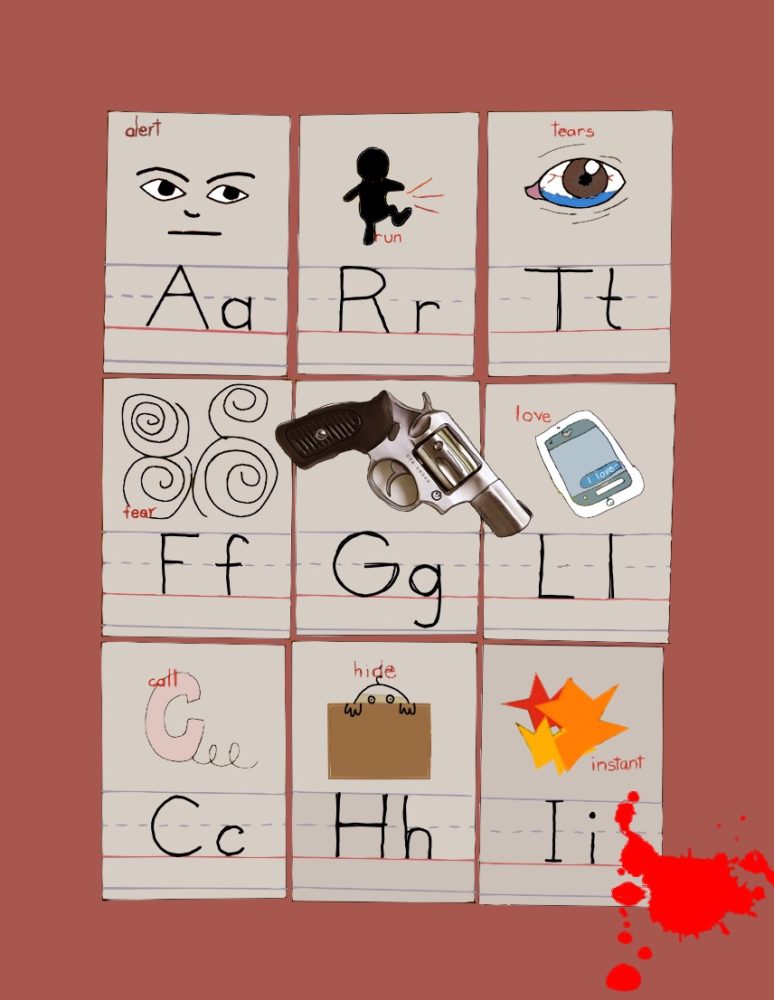
By Editorial Writers
We’re 51 weeks into 2019 and Everytown for Gun Safety Support reports that there have been at least 100 cases of gunfire on school grounds—26 of which have resulted in deaths, three in suicides and 63 injuries—since the time this article was published. The Washington Post’s database of school shootings estimates that over 236,000 students across the nation have witnessed gun violence at school since the 1999 Columbine shooting.
When you weave these numbers with survivors’ accounts, devastated families, vigils and student-led movements, a bigger picture emerges. Gun violence strips America’s youth of their innocence and forces them to grapple with perpetual fear. School shootings and gun violence are seen as “normal” in America, and we need to take action to ensure that our nation never accepts that belief.
Fact: school shootings are rare. You’re more likely to die on the way to school or back than to experience a school shooting.
Fact: the fear of being shot on a school campus isn’t rare. The haunting idea that a school shooting can occur is more prevalent than ever in students’ minds. There’s no doubt that many of us felt anxious and upset when we heard about the Saugus High School shooting in Santa Clarita, just an hour away, while we were on campus. The ring of a fire alarm or an active shooter drill also shakes students up.
Schools seem to be gun hotspots, conjuring up images of doors barred with chairs, scissors and heavy textbooks as weapons and “I love you” texts to parents. It’s unacceptable for a student to dread going to school, not because of exams and essays, but because of the possibility of getting shot.
It’s sad that this is a real concern for American students, that they lose their innocence in school, that they have to grapple with broken politics and be the ones to initiate gun reform and control movements.
The necessary and responsible action is to push for strict legislation on gun control and reform.
1. Hold rigorous background checks and detailed vetting to prevent the unrestricted access to weapons such as the semi-automatic ones used at the Las Vegas Shooting and the Orlando Club Shooting must be limited. These are necessary precautions that all gun dealers need to thoroughly practice.
2. Raise the minimum age to purchase a firearm from licensed and unlicensed dealers to 21 years old. “The Truth About School Shootings” by the Gifford Law Center to Prevent Gun Violence found that about 1 million high school students can legally purchase an AR-15 due to loosely regulated state laws.
3. Implement child access prevention laws nation-wide. According to Sandy Hook Promise, 68% of school shootings in which a student or other young person was the shooter, such as the 2018 Santa Fe and Benton shootings, obtained the gun from an adult in their household.
4. Enact extreme risk protection orders (ERPO) laws to allow law enforcement and courts to temporarily disarm individuals with violent intentions who pose threats to others and/or themselves. “The Truth About School Shootings” states that Maryland disarmed four individuals who made threats against schools within three months of passing ERPO laws.
While mental health is a focus on gun control and reform debates, the majority of those with mental illness are not violent. It’s important that society better addresses mental health and expands mental health awareness resources and facilities, but mental health is not to blame and laws are the most effective measures.
Active shooter drills and school security can help prepare students both mentally and physically for the possibility of a school shooting. However, James Alan Fox, a professor of criminology at Northwestern University and one of the nation’s leading researchers on mass murder, told the News@Northeastern that amping up security can “instill fear, not relieve it” because they make students walk on eggshells.
Students, us, don’t deserve to experience trauma and fear just from being at school, and we need to promise ourselves to never accept gun violence as “normal.” Giving up some of our Second Amendment freedoms for the increased safety and reduced emotional stress of students, and of our nation as a whole, is worth it.
The gun legislations in this story are adapted from “The Truth About School Shootings” by the Gifford Law Center to Prevent Gun Violence.





